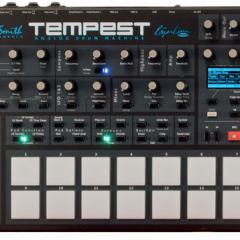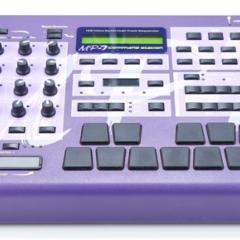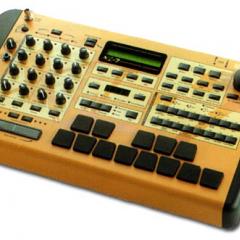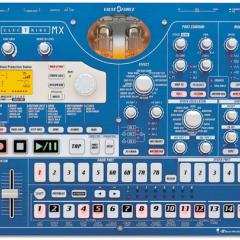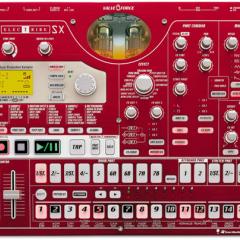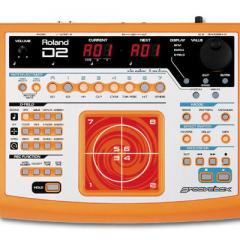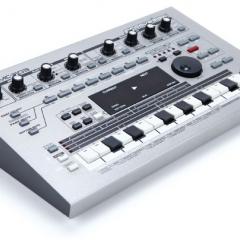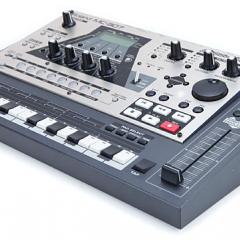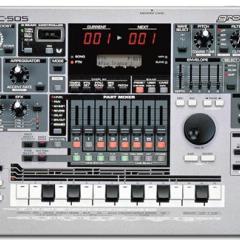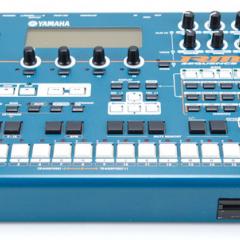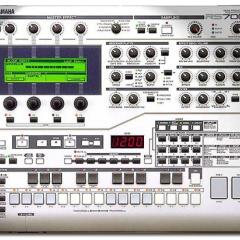Roland MC-909
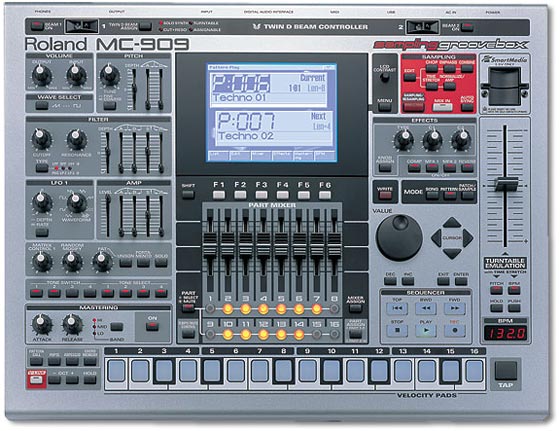
The MC-909 is Roland's answer to the demands of serious producers who want a workstation that seamlessly integrates audio and MIDI. Based on the XV-series synthesis engine with sampling RAM expandable up to 272MB (16MB standard), the MC-909 has evolved beyond the original concept of a Groovebox. This professional workstation boasts 800 new Patches, 64 Rhythm Sets and 693 all-new waveforms, with SRX expansion. And with professional sequencing, onboard effects, mastering tools and an ultra-intuitive interface-plus a USB port for exchanging samples and sequences with a PC, the MC-909 is all you need to take your music from conception to completion.
The MC-909 is more than a Groovebox with sampling. Audio and MIDI can be integrated, synthesized and sequenced together within a single, easy-to-use environment. Sample some phrases and sequence them alongside MIDI tracks as the MC-909 synchronizes your loops automatically. Samples can even be used as raw waveforms in the synthesizer section, opening up a world of sonic possibilities. The MC-909's big LCD screen makes it easy to locate sounds, sample audio, edit waveforms and sequence MIDI arrangements. Nearly all major parameters can be accessed via knobs, sliders and buttons, while the dedicated Part Mixer makes mixing a snap. You also get two of Roland's most popular performance controllers: Turntable Emulation makes it possible to adjust pitch and time independently for MIDI or audio (thanks to some innovative realtime time-stretching), while Twin D Beams use an infrared beam of light for triggering samples, tweaking filters and more.
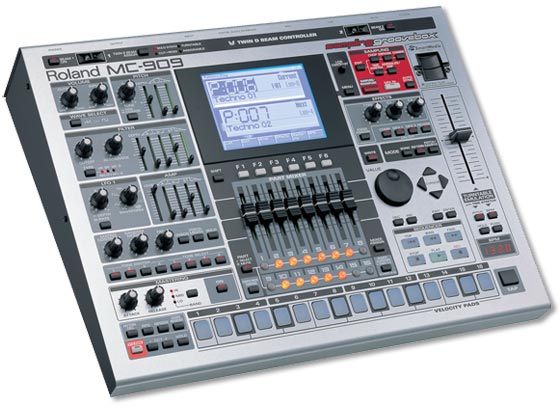
On the inside is a powerful 4-Tone synthesis engine with stereo waveforms per Tone and 64-voice polyphony. Yet the MC-909 is still as easy to program as an analog synth-thanks to a generous supply of knobs, buttons and sliders. The MC-909 also comes with 16MB of sample memory, expandable up to 272MB using optional DIMMs. Audio can be recorded via the stereo analog inputs or digitally using the S/PDIF input. You can even import .WAV/AIFF files from a computer via USB. Samples can be processed in a variety of ways. Using Wave Edit, a waveform can be truncated and looped while viewing it graphically on the LCD. The Time-stretch function, on the other hand, makes it possible to change a loop's tempo without affecting pitch. Or, if you prefer to create your own loops, simply "slice" up a loop with Chop. You can trigger samples from the velocity-sensitive pads or via an external MIDI keyboard.
The MC-909's 16-track sequencer has been improved in many ways with 480 ticks-per-quarter-note resolution. Patterns can also be up to 998 measures and a new version of Roland's popular TR recording method (similar to "Piano Roll" editing) makes it possible to view several notes at once using the pads and LCD. The MC-909's sequencer is fully compatible with Standard MIDI Files, allowing you to import and export SMF sequences via the built-in USB port. Of course, the MC-909 comes with hundreds of patterns-programmed by professional producers-that fully exploit the new sounds like UK hard-house, trance and the latest "broken-beat" hip-hop and R&B. And it's all expandable via SRX-Series wave expansion boards.
There's no need for outboard effects with the MC-909. There's a 24-bit reverb that can be applied to each sequencer part, a new dedicated compressor, and two independent multi-effects (MFX) for the new filter algorithms-including a 36dB filter and amazing Step Filter-plus tempo-synced delay (up to four seconds), phasing, distortion and other proprietary effects like Lo-Fi, Slicer and COSM Amp Modeling. There's also a special Mastering processor which includes 3-band compression/EQ for creating "final" mixes.
The MC-909 ships with a dance-oriented ROM containing everything from house pianos and organs to edgy techno hoovers and stabs-plus favorites like the JP-8000 "SuperSaw" waveform and distorted TB-303 sounds. There are also plenty of basses, pads and sound effects perfect for any track, along with a complete assortment of drum kits. New sounds can be added by installing an optional SRX-Series Wave Expansion Board. The SRX-05 "Supreme Dance" expansion has special Patches that can only be accessed on the MC-909. The SmartMedia slot allows for optional memory cards that can be used to store User data such as samples, patches, rhythm sets and patterns. Other professional features include S/PDIF digital I/O, six analog outputs and stereo analog inputs, and a new V-LINK function for integrating audio and video-in performance (with the Edirol DV-7PR Digital Video Workstation, sold separately). The MC-909 has been used by Überzone.
Demos & Media
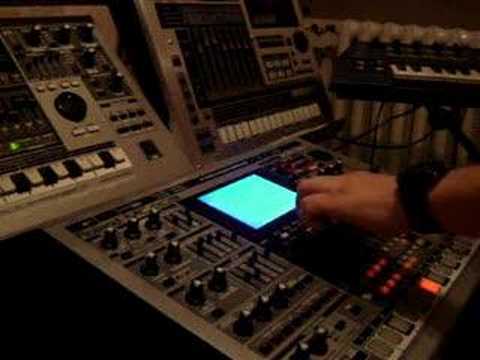
Specifications
Internal memory (16MB) only = mono: 180 sec. (stereo 90 sec. approx.), with DIMM (256MB) = mono: 51 min. (stereo 25.5 min. approx.)
Samples: User/2,000, Card/7,000 (128MB SmartMedia)
Patterns: Preset 333, RPS 440, User 200, Card 999
Songs: 50
Rec. Modes: Realtime, TR-REC, Step
Rhythm Set: Preset/89, User/128, SmartMedia Card/128
1 Expansion Slot for Wave Expansion Board SRX Series
Resources
Images from Roland-US.
Reviewed August 2008.
